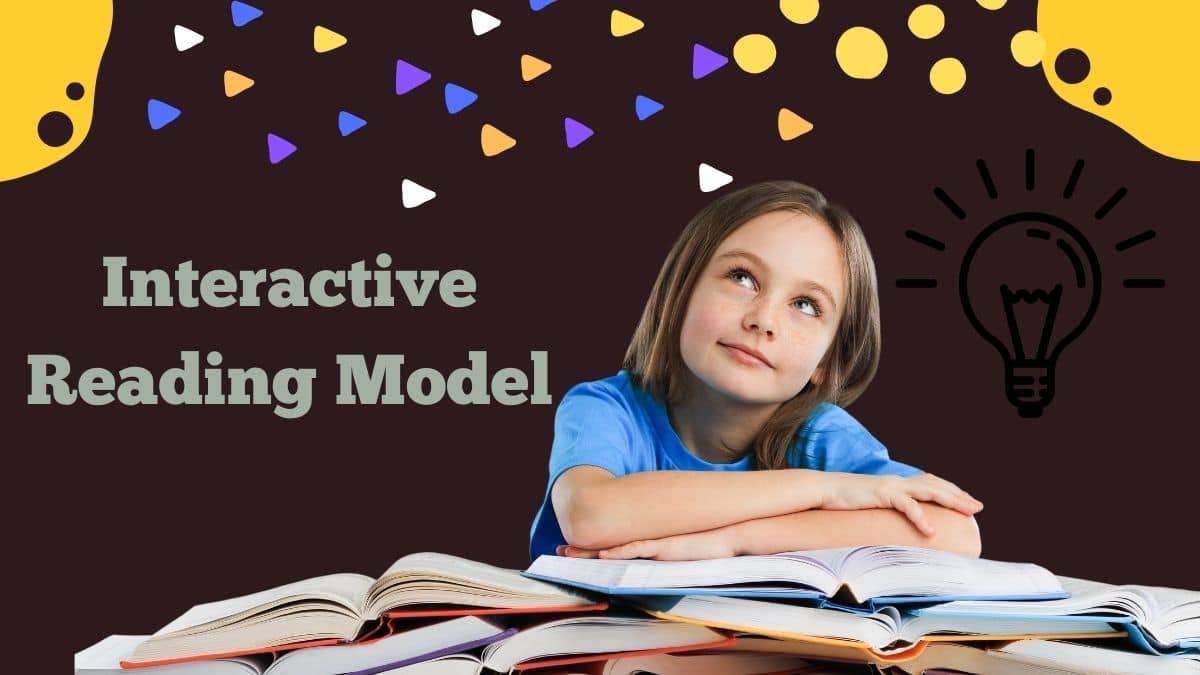An interactive reading model attempts to combine the valid insights of bottom-up and top-down models. It attempts to take into account the strong points of the bottom-up and top-down models and tries to avoid the criticisms leveled against each, making it one of the most promising approaches to the theory of reading today (McCormick, T. 1988).
What is the interactive reading model?
The interactive reading model, or IRM, is a reading model that recognizes the interaction of bottom-up and top-down processes simultaneously throughout the reading process.
The IRM is based on the idea that readers do not just read words and sentences but also make predictions. This prediction process involves both bottom-up processing, where readers attempt to determine the text’s meaning based on their knowledge of individual letters and how they are arranged into words, and top-down processing, where readers rely on their past experiences with similar situations and cues in order to make sense of new information.
Who are the proponents of the interactive reading model?
Here are some proponents of the interactive reading model:
- Rumelhart, D. 1985
- Barr, Sadow, and Blachowicz 1990
- Ruddell and Speaker 1985
Discussion
Here are the views of some researchers about the interactive reading model:
Emerald Dechant:
The interactive model suggests that the reader constructs meaning by the selective use of information from all sources of meaning (graphemic, phonemic, morphemic, syntax, semantics) without adherence to any one set order. The reader simultaneously uses all levels of processing even though one source of meaning can be primary at a given time. (Dechant 1991)
Kenneth Goodman:
An interactive model is one that uses print as input and has meaning as output. But the reader provides input, too, and the reader, interacting with the text, is selective in using just as little of the cues from the text as necessary to construct meaning. (Goodman, K. 1981)
David E. Rumelhart:
Reading is at once a perceptual and a cognitive process. It is a process that bridges and blurs these two traditional distinctions. Moreover, a skilled reader must be able to make use of sensory, syntactic, semantic, and pragmatic information to accomplish the task. These various sources of information appear to interact in many complex ways during the process of reading (Rumelhart, D. 1985).
Examples
The distinction between reading methodologies that are classified as whole-language (top-down) in contrast to interactive is not always clear. Here are some examples, though, of instructional programs that incorporate the interactive reading model:
The multistrategy method, with its workbook track and the storybook track, is a fairly clear-cut example of a methodology that attempts to focus on all levels of the reading hierarchy.
Another method that is traditionally labeled as bottom-up but does have components that attempt to guide the reader through all levels of the reading hierarchy is the Gudschinsky method.
An interactive whole language instructional program developed by SIL in Papua New Guinea focuses on using whole texts to teach reading. These texts are reproduced in primers, storybooks, or Big books. Various reading activities are constructed around the texts. Lessons include the systematic teaching of phonics or syllables. If primers are constructed, their lessons link with the story in focus.
![]() Free PPT: Interactive Reading Model – What Teachers Should Know
Free PPT: Interactive Reading Model – What Teachers Should Know
If you’re looking for more resources about reading or professional education, then make sure to browse my website.


